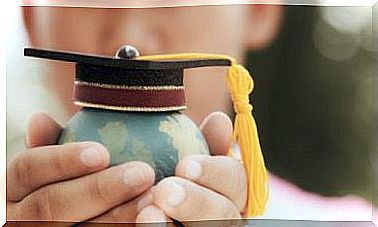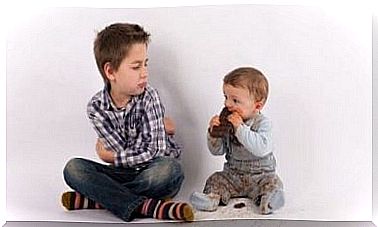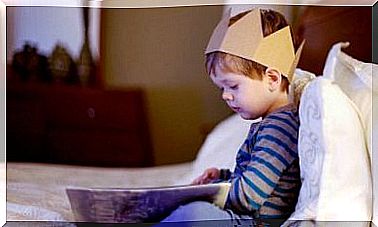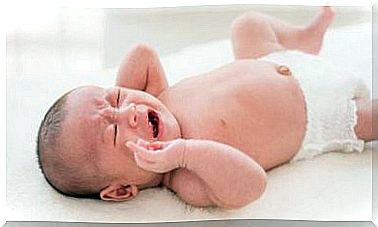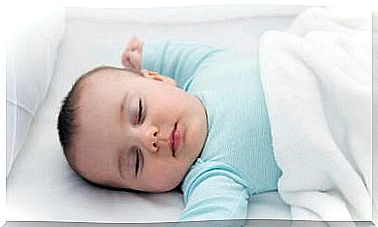Play With Your Baby To Stimulate Him
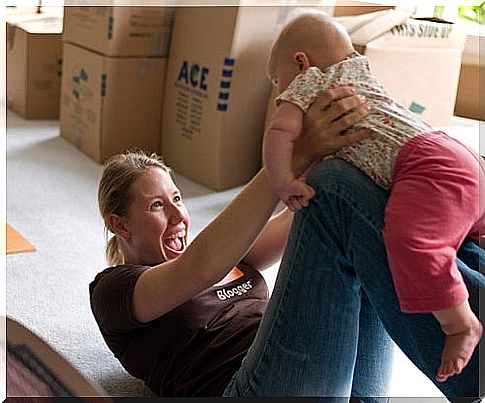
We all learn by playing and, in fact, the game is the best way to acquire new knowledge and develop your skills in different areas of life. So, play with your baby to stimulate him! In this article we will give you some tips on how to play with them according to age.
To some, it seems unbelievable that when children play, they are actually learning too, growing up. It is enough to see how some learn foreign languages through songs to show that, thanks to what we consider a “game”, children learn and grow.
By making good use of play activities, children learn to communicate with the people around them. Playing with him is just as important as talking to him or taking care of his health and diet.
Some guides for parents compiled by pediatricians explain that, during the first years of a child’s life, there are actions and games that can promote his learning, stimulate his curiosity and develop his psychomotor skills.
Pediatricians point out that the right kind of stimulation has very clear benefits, both physically, intellectually, socially and emotionally. Everything must be done as if it were a game and you must never force the child to do something.
There is no need to exaggerate, a few minutes a day are enough to play some of the games or activities that we will explain in this article.

The game according to age
It is important to choose the right game and strategy to stimulate your child through games according to his age. During the first three months of life, for example, you can lay him on his stomach and show him brightly colored toys by moving them from side to side.
You can also talk to him by looking into his eyes, sing to him, smile at him, stroke his cheek and the corners of his mouth, or make different sounds when you are near him.
Don’t be afraid to insert a finger into the palm of his hand, to move his arms or body from side to side, or to stretch his legs by holding him by the heels.
When he is lying on his stomach, you can also show him objects by placing them in front of his face and lifting them when he starts staring at them.
Movement and colors
Between three and six months of age, you can continue to repeat the activities you did during your first trimester. Also, you can give him pecks on the hands, poke his tongue when he looks at you, and make noises with your lips.
You will also be able to stimulate him by taking his little hands and bringing them close until they touch. You can also gently pull him from his arms to make him sit up.
We advise you to put light pressure on the soles of his feet, so that he makes the effort to stretch his legs. Try to put objects in his hand and then remove them when he grabs them.
Between six and nine months of life, you can show him objects with bright colors or that emit sounds to invite him to follow them with his eyes, approach them and then move them away, hide them, etc.
Even showing him a mirror so that he can observe himself while you repeat his name, covering his face with a handkerchief and waiting for him to take it off by repeating his name, talking to him by gesticulating and repeating the syllables are excellent stimuli for his age.
It doesn’t have to be a complicated game, you can tell what you are doing in clear language, give him objects to grasp them with your hands and invite him to slam them against each other, show him his feet by putting on colored socks and stimulate him to turn your body by lying next to him and calling him.
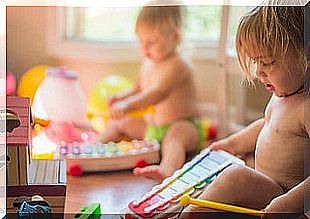
Play and recognize
Psychologist Rosa Jove assures that spontaneous and creative play is much more effective if played with everyday objects that the child can use as he prefers, depending on what his imagination suggests.
This will help him explore the world and discover new possibilities, uses and dimensions of the object and experience. Remember that between nine and twelve months you can start reading them stories that have drawings of animals, imitating their sounds.
Another simple game is to make him touch different textures, play changing facial expressions, make noises with his tongue or lips, give him kisses, blow, wrap his toys in paper that makes noise and wait for them waste.
We also advise you to give him cubes of different sizes to insert and remove, to bring his feet close to his mouth, to help him stand up and walk by holding him by the armpits or hands. In this way, you will help him develop his motor skills.
Between 12 and 15 months you have to help him walk and climb stairs by taking his hands. Teach him to put objects in containers, to make towers with cubes, to color on sheets, to leaf through the pages of a book, to hold a spoon, to drink from a glass, to open and close containers or to fit objects together. .
You can also show them body parts and teach them to recognize themselves in photographs or in the mirror. It is a game that stimulates his memory and cognitive processes in general.
At this age, you can also ask him to help you when you undress him, to eat alone, or to stimulate chewing. Also, you can give him small tasks and have him bring or bring back items.
Later, around 18 months of age, it’s great to help him up and down stairs and kick a ball. Pointing to familiar drawings in books is also a very important stimulus for language development, as well as speaking to him in clear and simple sentences, hiding things around the house and then prompting him to find them.


